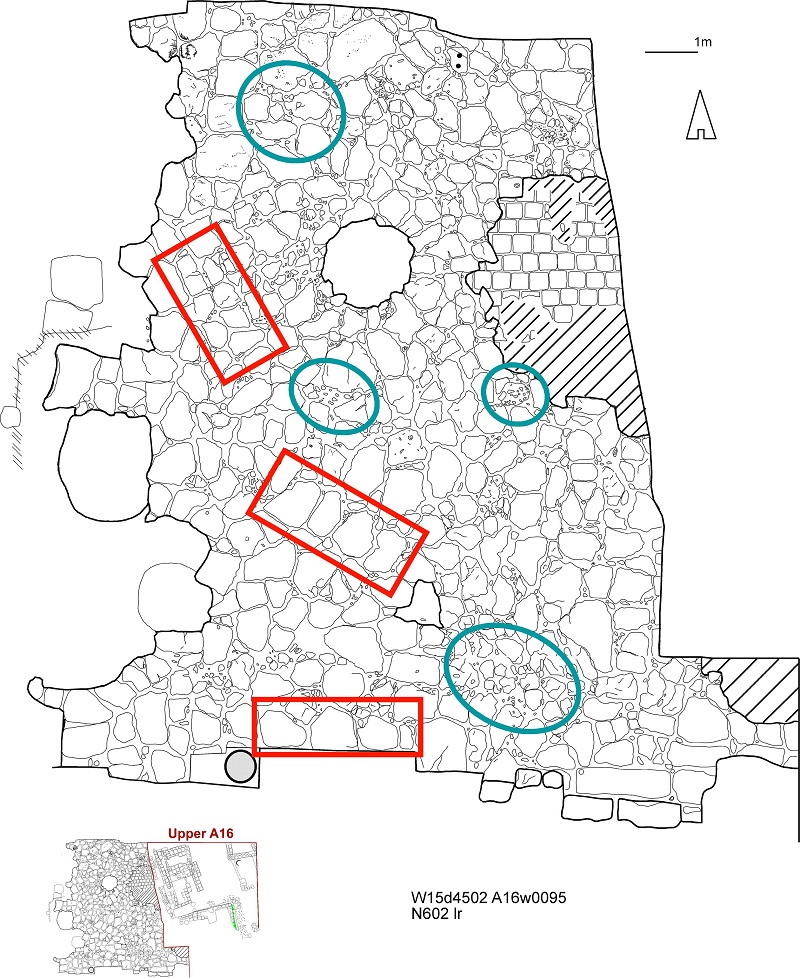Back to top: Horizontal surfaces
Introduction
The two main types of horizontal surfaces, whether defined by discrete components (pavements) or by soil compaction (floors), are well attested in A16.
Back to top: Horizontal surfaces
Surfaces defined by discrete components (pavements)
|
The major pavement is the one of the Tupkish Palace courtyard, a12. This is the clearest example of a coherent horizontal surface resulting from the juxtaposition of flat stone slabs. They are so organized that the edges are at times well aligned (examples are shown within square red frames), and at times instead with wide joints of mud and small stones (round blue frames). (See typology for a fuller description.) Pebble and sherd surfaces are found in the Khabur period strata: f119, f144, f207: they are understood as street surfaces between burial installations. A baked brick surface (a24), found immediately below the slab surface of the courtyard pavement a12 may best be understood not as a pavement, but as the top of an underlying installation, possibly a drain. Similarly, what appear to be a river cobble surface (f338) may best be understood as the top of a fill capped by the baked brick surface a24. |

|
Back to top: Horizontal surfaces
Surfaces defined by soil compaction (floors)
Two major types may be distinguished, based on whether or not they are bounded by well defined vertical elements (walls).
Those that are so defined are found in relation to a room (f51 and f63 within a1) or small installations (built-up burials): f29, f92, f112, f125, f134, f140
The surfaces that are not clearly bounded are either fragments for which boundaries may be presumed but are missing (f36, f88, f133, f201), or else they are larger areas in an outdoor setting (f120, f121, f146, f159).
Back to top: Horizontal surfaces